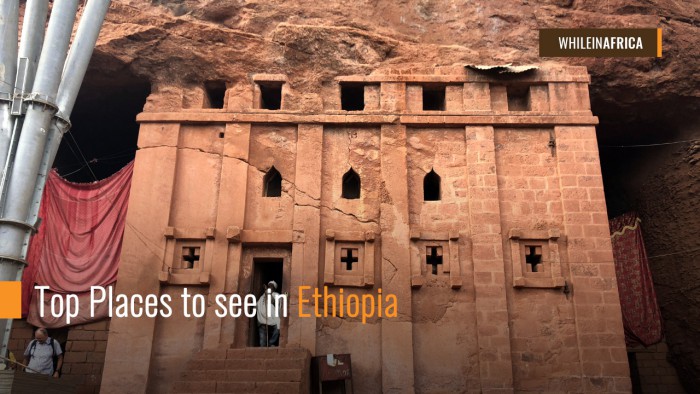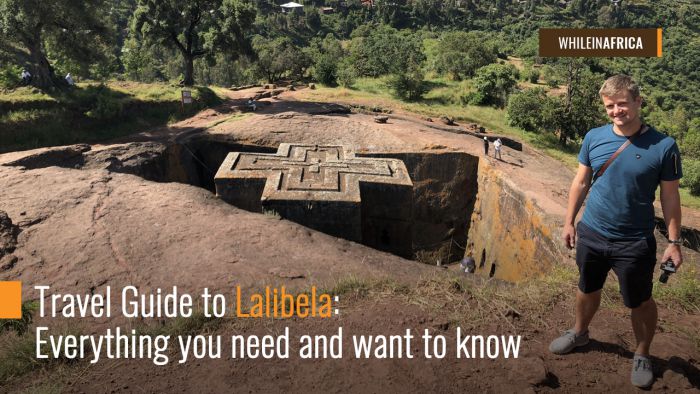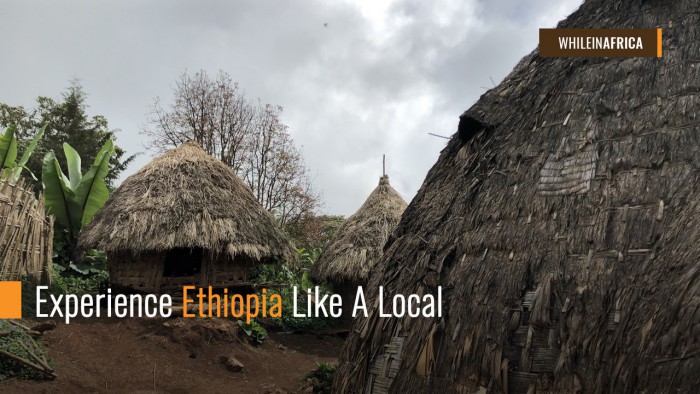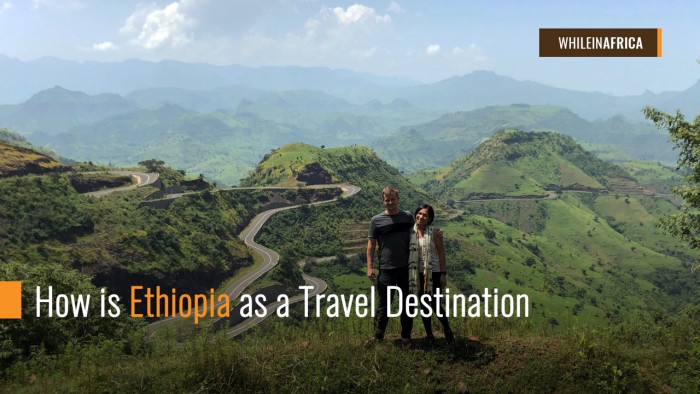Very few countries can manage to wow their visitors in the way Ethiopia does. It is unlike anywhere else on the planet; breathtaking natural beauty, peerless history, diverse culture, soulful people, delicious cuisine, and fantastic wildlife. What’s not to love? Its fascinating history stretches back 3,000 years to the reign of King Solomon and the Queen of Sheba, and it currently boasts seven UNESCO World Heritage sites within its borders. Put quite simply, Ethiopia as a tourist destination is perfect for the traveler looking for a different and mind-blowing experience.
Now this beautiful country is more than four times the size of the UK, so it is safe to say that there is never going to be enough time to see and do everything you’d like to. This is compounded by the fact that driving around should only be done during daylight since you are likely to encounter wild animals, donkey carts and locals herding livestock after dusk. As such, it’s easy to understand why having even a rough itinerary ahead of your visit can help you get the most out of your trip. Here are the top must-see places in Ethiopia whether you’re a luxury traveler or a budget packer:
Northern Ethiopia
Lalibela Hewn Church For years, intrepid travelers have returned from Northern Ethiopia with grand tales of ancient civilizations, enchanting legends, and unforgettable adventures. These places can impress you day after day after day:
The Blue Nile Falls in Bahir Dar
This is one of the region’s top attractions, surging downstream from nearby Lake Tana and over the side of a sheer 45m-high chasm before exploding into a medley of mists, rainbows, and a continuous spray of water, which drenches onlookers a couple of hundred meters away. Lake Tana also contains many ancient monasteries brimming with cultural treasures, including murals, parchment manuscripts, crowns, crosses, and even the mummified remains of past Ethiopian emperors. Visitors can also see the many monkeys, hippos, and pelicans that inhabit the area. The site overlooking Blue Nile Falls has had many notable visitors including Queen Elizabeth II of Britain.
Lalibela (Rock Churches)
Also known as the “New Jerusalem, Lalibela was the place of pilgrimage for Orthodox Christians from the end of the 12th century because pilgrimages to proper Jerusalem were impossible since the lands between Jerusalem and Ethiopia were controlled by Muslims. The city is home to 11 ancient monolithic churches carved entirely out of single pink granite rock, complete with elaborate windows, columns, and roofs using just hammers and chisels. These churches have since been classified as a UNESCO World Heritage Site, with Bete Giyorgis (Saint George’s) being the most impressive thanks to its cross-shaped roof.
Aksum (sometimes spelled Axum) -The Cradle of Civilization
Many believe the origins of the Aksum Kingdom in the 5th century BC to be the start of Ethiopia’s history. At the peak of its prosperity, Aksum was said to have maintained political and commercial contacts with the Romans and Greeks, as well as with China and India. The many impressive monuments (royal tombs, castles, monolithic obelisks, and other historical artifacts) found here stand witness that this ancient city was once home to a great civilization. Its largest standing obelisk is intricately carved out of stone and towers at over 23 meters high.
The most popular site here is the famous Church of Our Lady Mary of Zion, which — it’s said with certainty — is the final resting place of the biblical Ark of The Covenant. Aksum is a UNESCO world heritage site and yet has revealed only a tiny fragment of its mystic secrets. An exploration of its ruined tombs and palaces is sure to fan the flames of excitement and intrigue.
Danakil Depression – Colourful ‘Gateway to Hell’
Not for the fainthearted, but a worthy inclusion on this list nonetheless. Bubbling volcanoes, sulphurous yellow mounds, and mirages of camels across lakes of salt are what await the daring traveler at this exceptional geological shaping. Danakil is home to around 40% of Africa’s volcanoes and the temperatures are so extreme that hikes are done at night or early morning, This place is considered as the lowest located place in Africa, about 116 metres under sea level, so be ready for a genuine, raw expedition. Come prepared with enough water, first-aid kit, torchlights, and any other necessary supplies.
Honorable Mentions
- Gondar (The Fortified City)
- Simien Mountains
- Debre Damo
Southern Ethiopia
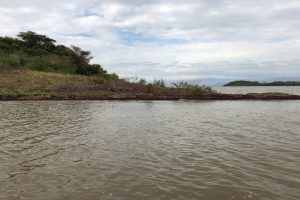
Arba Minch Lake
Warmer, wilder, and more classically African than its northern counterpart, Southern Ethiopia boasts an array of equally fascinating destinations. Experience nature’s bounty; from lush mountains and stirring deserts to vast lakes and sweeping savannahs, all of which are natural habitats to remarkable wildlife and diverse peoples with proud traditions.
Bale Mountains National Park
This park is home to the country’s endemic animals such as the Mountain Nyala, Simien Fox, Menelik’s bushbuck, and Giant mole-rats. It is also the prime hiking destination in Southern Ethiopia, featuring distinct forests, plateaus, jagged rock formations, and over 160 spectacular bird species including the indigenous Blue-winged Goose and Rouget’s Rail. Needless to say, a visit to Bale Mountains National Park will offer you the grandest mountain scenery in Africa.
Omo Valley
Unaffected by the outside world, the Omo region is home to some of the most fascinating ethnic groups in Africa. Their body adornments, unique attires, and cultural practices give fact to a proud history that has stood defiantly through the ages. The Omo Valley is a UNESCO world heritage site, thanks to its impressive contribution to paleontology in 1980, after researchers discovered human skeletons that lived over 3 million years ago. A trip here affords you the unique chance to encounter a markedly different way of life, one that will stick with you for a lifetime.
The Great Rift Valley
The Great Rift Valley splits Southern Ethiopia apart, stretching from the Red Sea to Mozambique, and is one of the few geographic features that’s visible from space! This giant valley features a chain of seven lakes – each with its distinct look and feel. This passage also includes hot springs, green forests and lots of fun wildlife, including flamingos, pelicans, hippos, and monkeys. Travellers coming from Northern Ethiopia are sure to love this place because of the warmth and humidity, which are a welcome break from the harsh highlands.
Honorable Mentions
- Key Afar
- Awasa
- Arba Minch
- Nechisar National Park
Eastern Ethiopia
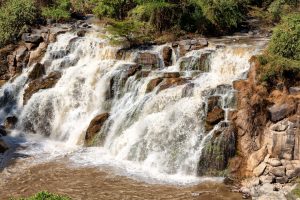
Little falls in Awash National Park
Scattered across the Eastern Ethiopian landscape are pockets of genuine adventure, guaranteed to thrill travelers, myth hunters, and nature lovers alike. Here are some places to get started:
Harar (4th Holiest City in Islam)
Harar is like no other place in Ethiopia. The ancient city dates as far back as the 7th century and was a major commercial hub that brought powerful merchants and Islamic scholars from all over the world. To date, there’s still a patina of myth about what went on within its 5 meter-high walls in its heyday. The wall (known as Jugal) runs about 3.5km around the city and was erected as a protective measure against invaders between the 13th and 16th centuries. There are 6 gates into Harar, the most recent was added in 1889 by Ras Makonnen, the first Duke of Harar.
In 2006, Harar was listed on the UNESCO register of World Heritage Sites. Within this walled city are more than 100 mosques and Islamic shrines, as well as colorful markets, reminiscent of its commercial prowess of days gone. The most exciting attraction, however, is the feeding by the local hyenas, where you’ll witness these beasts eating meat off a stick. You could also give it a try – if you dare!
Awash National Park
The scenic Awash National Park boasts the top spot on the most-visited National Parks in Ethiopia list. It is located about 200 km east of Addis Ababa and covers a whopping 750 square kilometer of grassland and acacia. The park is home to breathtaking scenery, diverse wildlife, nomadic tribes with their camels seeking to look for better grass. There’s also the Awash River, which cuts through the park and a huge waterfall where the river plunges into a beautiful gorge.
At the northern end of the park, visitors can take a quick dip at the Filwoha hot springs, therapeutic waters bubbling up in natural pools from the ground. Awash National Park lies on an important migratory route between the north and the south, so enthusiast birders are always in for a treat with the over 450 bird species present, among them some endemic or near-endemic species.
Babile Elephant Sanctuary
Around 400 unique elephant subspecies (Loxodonta africana orleansi), dwell in this well-protected 6982-square-km wildlife reserve. The best way to see them is to take the short drive through the Erer Valley and then walk to the thick brush where they are most likely to be spotted. The rare black-maned lions are also residents in the sanctuary, along with leopards, bushbucks, gazelles, and kudus. There are also at least 227 bird species listed. Camping is allowed anywhere within the park but there are no facilities, so be sure to bring all the necessary gear.
Honorable Mentions
- Lakes Afambo & Gumare
- Koremi
- Valley of Marvels
- Arthur Rimbaud Center
Western Ethiopia
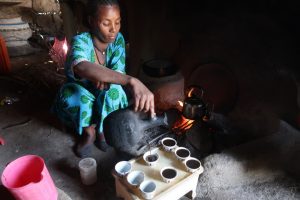
Coffee Ceremony
The western region of Ethiopia has often been described as a Utopia, featuring lush forests, deep river valleys, and coffee plantations. It is definitely one of the most beautiful regions in Ethiopia, which makes one wonder why it is seldom visited. Western Ethiopia is also the origin of coffee, the word itself derived from the name of the former region “Kaffa” where the coffee beans were first discovered. The top attractions in this region include:
Gambela National Park
Gambella is a hot and steamy place resting along the banks of the Baro River at a mere 530 meter above sea level. The town used to be a port for steamships bringing valuable resources from the Ethiopian highlands to Khartoum. Today, Gambella park is home to fascinating wildlife, some of it not found anywhere else in Ethiopia. It also boasts a rugged beauty with its territorial patchwork of savannah, flood plains, and riverine forests.
Travelers willing to brave the adventure can come across white-eared kobs, Lelwel hartebeest, antelopes, lions, elephants, and some very unique bird species. Keep in mind, however, that this is not an easy exploration, since the animals are mostly in the swampiest and hardest-to-reach area of the park. If you’re going out there, be sure to come prepared with a reliable 4WD vehicle, camping gear, food supplies, and a local guide. You should also inform the local authorities of your plans.
Coffee Expeditions
You can’t come to the coffee origin of the world and not check out the plantations and museums in the area. It is possible to schedule a tour of the coffee plantation through the Coffee Plantation Development Enterprise (CPDE) or at the plantation itself. The other famous plantation is the 93-sq-km Bebeka Coffee Plantation, which is the largest and oldest coffee farm in the country. Sadly, there are no more official tours offered here, but visitors may be able to wrangle a letter of introduction from the CPDE and then plead a compelling case at the farm itself.
If you’d like to know more about the history of coffee with a focus on Ethiopian production, as well as some archaeological finds, then the Kafa museum in the Kafa Biosphere Reserve is the place to be.
Menagesha National Forest
An easy day trip from Addis Ababa, this is one of the most beautiful forests in Western Ethiopia. Prepare for a long hike as there are almost a dozen trails meander through the forest. You might even find yourself on the path to the 3380m high Mt. Wuchacha. There are colobus monkeys, bushbucks, and some exotic birds along the trails to keep your company on the trail, while you can also stand in awe of the giant juniper and wanza (Cordia africana), which are over 400 years old.
Honorable Mentions
- Sor River Waterfalls
- Gibe Sheleko National Park
- Kumsa Moroda Palace
- Anuak Market
Best Time to Visit Ethiopia
October to February is usually the best time to plan a trip to Ethiopia since this is the peak of its dry season. However, if you’re looking to save money, you could book a trip in March or April when the rains are light and tour prices are generally lower. Avoid traveling in June to August, as heavy rainfall will dampen your experience.
Ethiopia is history and mystery bonded in time; its soul alive with the mesmerizing awe of its majestic culture and ancient magnificence. No matter what you’ve heard about Ethiopia, no matter how many pictures you’ve seen of its breathtaking monuments, nothing can prepare you for the reality of seeing it for yourself. More than housing a couple of World Heritage sites, it is truly a world wonder. Make no mistake, this journey will move you, inspire you, and be an adventure of a lifetime. Are you ready?

